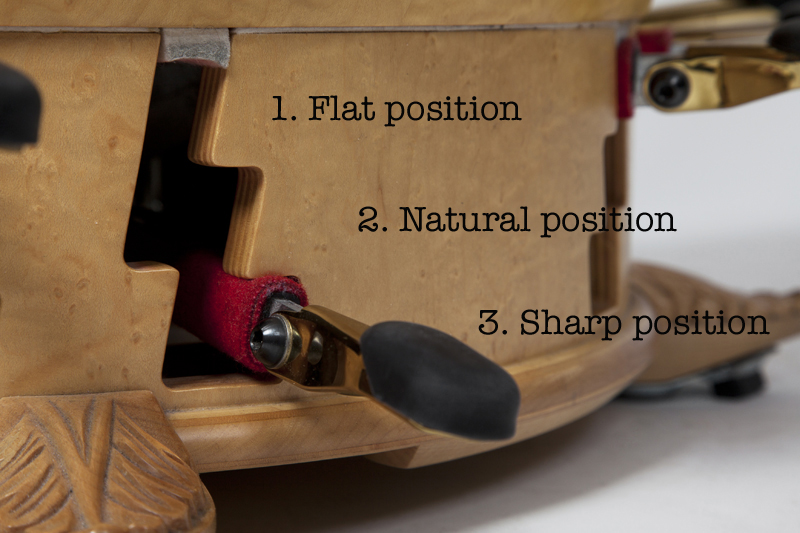Pedal mechanism
The harp has seven strings per octave: C D E F G A B. The pitch of each string can be altered by means of seven pedals, one for each note in the octave. The C pedal regulates all the C strings, the D pedal all the D strings, the E pedal all the E strings, and so on.[Chaloupka1979]
There are three pedals on the left side, operated by the left foot, and four pedals on the right side, operated by the right foot:

An overview of the pedals.
The pedal mechanism makes it possible for the harpist to play all the notes in the chromatic scale. This pedal mechanism will produce flat, natural, or sharp pitches on each string by engaging the discs and shortening or lengthening the strings. The string can only have one of the three pitches (flat,natural or sharp) at a time.[Chaloupka1985]
Each pedal has three positions, Flat, natural and sharp.

Pedal positions
- Flat position: The pedal is in the top position and the discs are disengaged.
- Natural position: The pedal is in the middle position; one disc has shortened the string by a semitone.
- Sharp position. The pedal is in the lowest position, both discs are engaged and have shortened the string by a whole tone.

Movements of the tuning discs.
The pedal mechanism does not affect the two lowest strings on the concert harp, contra octave C and D. These notes must therefore be pre-tuned by hand and their pitches will remain the same regardless of the movements of the D and C pedals. On some harps there is also no pedal mechanism on the highest string, the top G. (g'''').